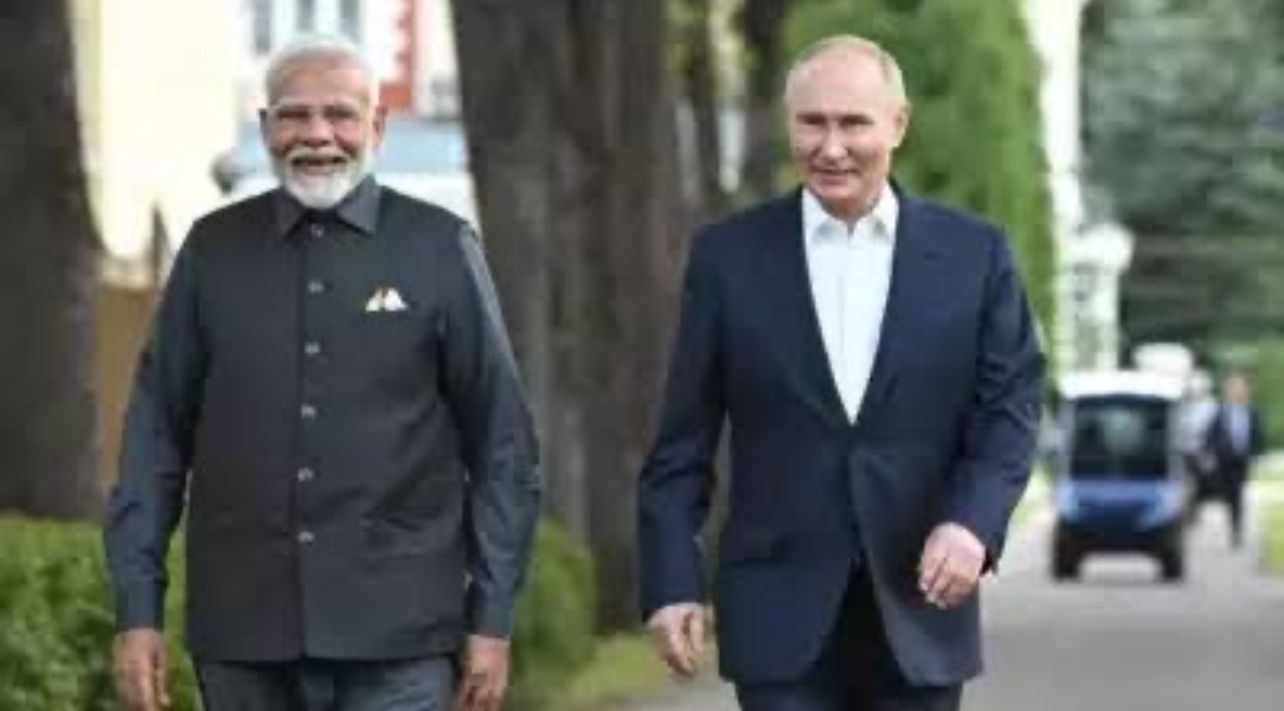
India-Russia Relations Strengthened at 22nd Annual Summit » Capital News
July 25 – Indian Prime Minister Narendra Modi made an official visit to the Russian Federation for the 22nd India-Russia Annual Summit, underscoring the strong ties between the two countries.
This summit is a key platform for dialogue in their strategic partnership, with previous meetings alternating between India and Russia. The last summit was held on December 6, 2021, in New Delhi, where 28 Memorandums of Understanding (MoUs) and agreements were signed.
During this visit, Russian President Vladimir Putin awarded Prime Minister Modi the “Order of Saint Andrew the Apostle,” Russia’s highest civilian honor, in recognition of his contributions to the development of the Special and Privileged Strategic Partnership between India and Russia and fostering friendly relations between the peoples of the two nations.
The leaders reviewed a broad range of bilateral issues, including defense, trade, investment, energy cooperation, education, culture, and people-to-people exchanges. India and the USSR established formal diplomatic relations in 1947, with significant milestones in 1955 when Prime Minister Jawaharlal Nehru visited Moscow, followed by a reciprocal visit. These visits laid the groundwork for a relationship based on four pillars: strategic partnership, economic cooperation, defense collaboration, and scientific and technological exchange.
The strategic partnership was further solidified with the signing of the Treaty of Peace, Friendship, and Cooperation in 1971. The economic relationship flourished, with a notable increase in bilateral trade, and India’s defense cooperation with Russia deepened, with India sourcing most of its defense equipment from Russia. The 1972 Science and Technology Agreement and the 1987 Integrated Long-Term Program of Cooperation also played critical roles in enhancing collaboration in these fields.
In 2000, the India-Russia Strategic Partnership was declared, which was elevated to a “Special and Privileged Strategic Partnership” in 2010, reinforcing ties across various domains. Bilateral trade has surged from USD 5 billion in 2010-11 to USD 65 billion in 2023-24. India’s exports to Russia include nuclear reactors, pharmaceuticals, electrical machinery, and chemicals, while its imports consist mainly of mineral fuels, oils, fertilizers, and pearls.
The two nations have set an ambitious target to reach USD 100 billion in bilateral trade by 2030. They plan to hold the next session of the India-Russia Intergovernmental Commission on Trade, Economic, Scientific, Technical, and Cultural Cooperation (IRIGC-TEC) in the second half of 2024 in Russia. The summit emphasized accelerating trade through industrial collaboration, technological alliances, and negotiating a bilateral free-trade agreement focusing on services and investments, as well as establishing a Eurasian Economic Union-India Free Trade Area.
Discussions also included enhancing connectivity via the International North-South Trade Corridor (INSTC) to reduce cargo transportation time and costs. Both countries reaffirmed their commitment to peaceful nuclear energy and space cooperation and highlighted the importance of educational and scientific collaborations.
The summit concluded with the signing of multiple MoUs and cooperation agreements in various fields, including climate change, geodesy, cartography, broadcasting, pharmacy, and investment cooperation. These agreements aim to foster innovation, promote bilateral trade, and enhance investment cooperation.
Prime Minister Modi’s visit has reaffirmed the robust partnership between India and Russia, setting a promising future trajectory for the relationship, marked by strong industrial cooperation, technological advancements, and a shared commitment to global peace and development.
